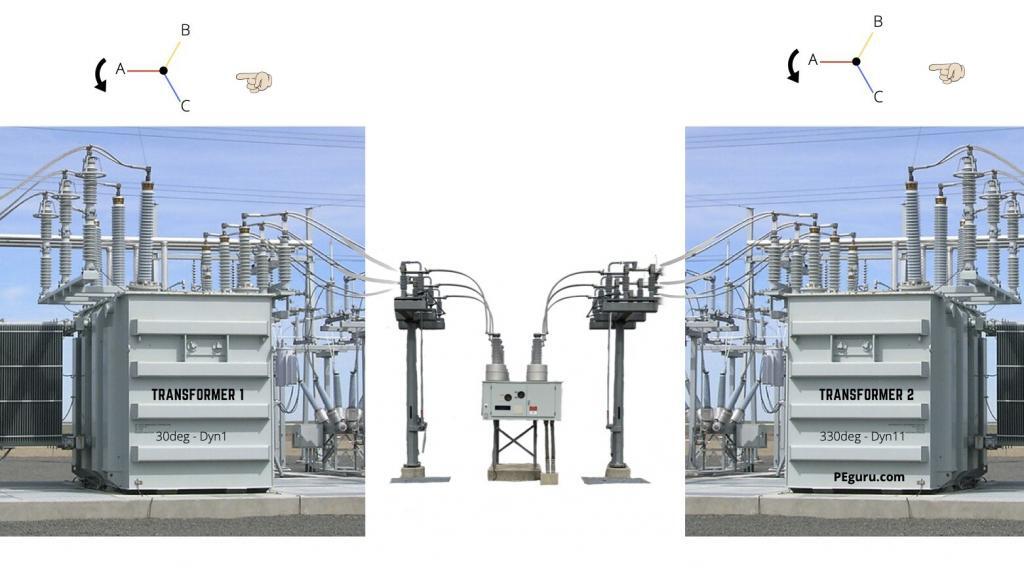
Are you adding a new transformer, or perhaps replacing as existing one? Is the transformer’s phase shift different compared to another transformer in the same yard?
You need to get two things right when it’s time to parallel two transformers at a transmission substation.
- Identify source vector rotation. Keep it intact – going into and out of the substation.
- Identify the transformer phase-shift. If different from others, correct it. All transformers must yield the same phase shift.
You get either one wrong and attempt closing the tie-breaker, sit-back and watch the mayhem. Not sure why? I will share the details in the following sections, starting with the basics. But first, check out the entire phasing process in the infographic below.
Source vector rotation A-B-C or C-B-A
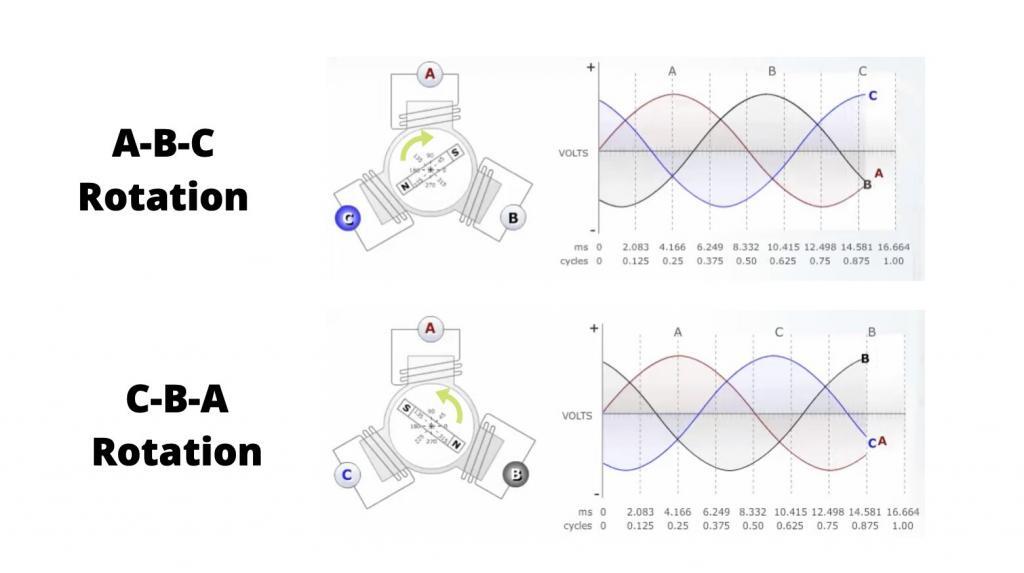
A generator’s rotor can spin one of two ways, shown above; this means the sequence of which phase reaches the peak magnitude differs. For instance, in Figure 3 above:
At 0.5cycle
- Phase B approaches peak positive magnitude, in A-B-C rotation system
- Phase B departs peak negative magnitude, in C-B-A rotation system.
When it comes time to connect these two generators to the power grid, they will never synchronize (as presented). You may assume they operate independently, feeding an islanded power grid. However, have you seen the power grid in North America? There are hundreds, if not thousands of generators interconnected, with A-B-C and C-B-A rotations. How did they manage to synchronize?
Phase shift due to delta-to-wye transformers
Another conundrum pertains to the phase shift within the transformer. Depending on how the high side and low side windings get wound on the core, the transformer shifts the phase angle accordingly, explained in detail in this paper by Basler.
Hypothetically, if you have a grid with transformers that shift phase angles equally (and has equal loading), you would end up with something as shown in Figure 6 above. The vectors on both sides of the tie breaker are in sync, yielding an ideal condition for the breaker to close. What if the two systems contained transformers with different phase shifts? Is synchronization possible then?
How to parallel transformers at a substation
Let’s combine the two concepts discussed above. Both play significant role in paralleling.
Identify source vector rotation
If you’re presented with a source vector rotation, for instance: A-B-C, you can always flip it – outside the generating station. A typical location in the transmission system is at a transformer.
In most substations, you are trying to preserve the vector rotation – in and out of the substation. However, you will come across situations where you are tying two systems with different rotations or feeding an end-user like an industrial customer whose motor loads are wired for flipped rotation. In this case, use a transformer to change A-B-C to C-B-A or vice-versa. Make sure to understand the application of your transformer.
One of the most convoluted ideas is how you land the phase conductor on the transformer bushings, to change vector rotation. Follow the directions presented in the infographic to figure out which phases go where.
Keep in mind, merely twisting the phase conductors on the low-side does not change the voltage vector rotation, see the image below. The A-B-C rotation stays intact through the transformer.
Conversely, if you do flip the phases on the high voltage bushings, the rotation gets changed.
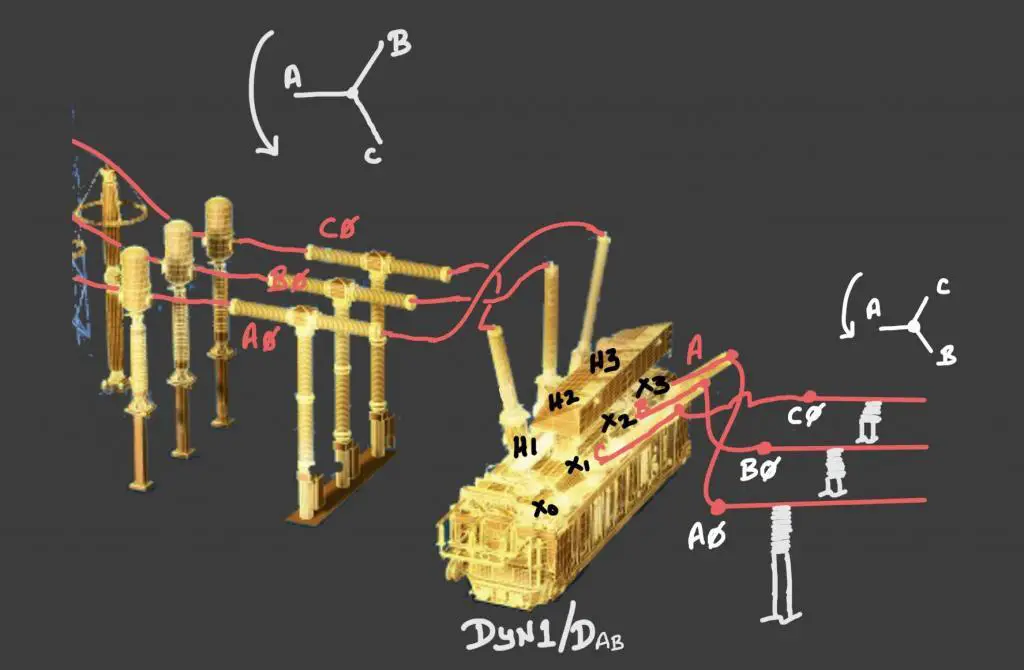
If you connect any one of the combinations shown in the negative rotation column below – to the high-side bushings (for the above set-up), the rotation changes to a negative sequence on the low-side.
| A-B-C positive rotation combinations | C-B-A negative rotation combinations |
|---|---|
| A – B – C | C – B – A |
| C – A – B | A – C – B |
| B – C – A | B – A – C |
Flipping vector rotation changed the transformer phase shift, now what?
Unfortunately, flipping the vector rotation affects the transformer’s nameplate phase shift too – Dyn1 30degree transformer becomes Dyn11 330degree, and Dyn11 becomes Dyn1. Now, why this phase shift occurs, is a topic for a future article.
With this new shift, make sure it matches the phase shift of other existing transformers in the substation. Otherwise, paralleling is not possible.
In a high voltage station, crossing the two outside phases can be challenging. There might not be enough space to squeeze in a phase transposition structure. Thus, if you roll the phases, as shown in the infographic, you still keep the vector rotation you want and get a combination where you only flip the outside 2 phases (H1-H2 or H2-H3) instead of H1-H3, making it easy to transpose.
Phase angle, frequency, and grid synchronization
On a related note, the interconnection of two power systems requires synchronization of the phase angles. Ofcourse, the voltage magnitude shall be equal too.
It is quite possible, one system may have transformers with different phase shifts (30deg, 90deg, or 150deg, but rotating in the same direction) than others. This may put the vectors at different phase angles, at the point of coupling.
Using the synchroscope shown below, let’s see how we can synchronize the systems.
When the incoming source has a higher frequency (spinning faster \rArr squished Sine wave) relative to the reference system, the synchroscope spins clockwise; indicating a positive \Delta{f}. Vice versa holds true when the frequency is slow.

In this scenario, when the dial hits 12 o’clock position (where \Delta{f}=0), the phase angles of the two systems are roughly synchronized; allowing the tie breaker to close.
If the two systems spin at exactly the same frequency and remain out of phase, the dial would indicate the out-of-phase angle and stays fixed. The possibility of synchronization, in this case, is non-existent.
When synchronization does occur, the system with higher inertia (or higher stiffness) will try to pull the other system into its step. Check the video below to understand this flexible-electrical-coupling-between-systems concept.
On a slightly unrelated note, this video also explains the underlying concept of how power can either be imported or exported from one region to another. Modulate the frequency of an entire region (using the generator governor or by adding load) and watch the power wheel through the grid.
In this article, we explored the concept of phasing and how it affects transformer paralleling. However, there are other factors such as kVA rating, \%{Z}, No-Load-Tap setting, etc. affecting paralleling. Do check this paper by Schneider Electric that discusses them in detail.


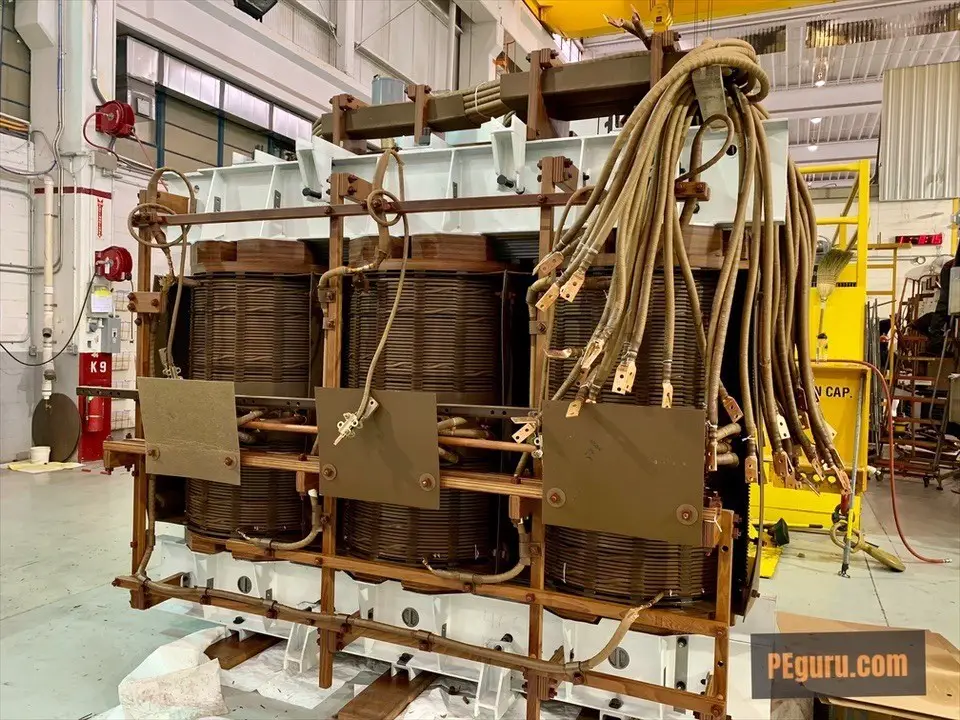
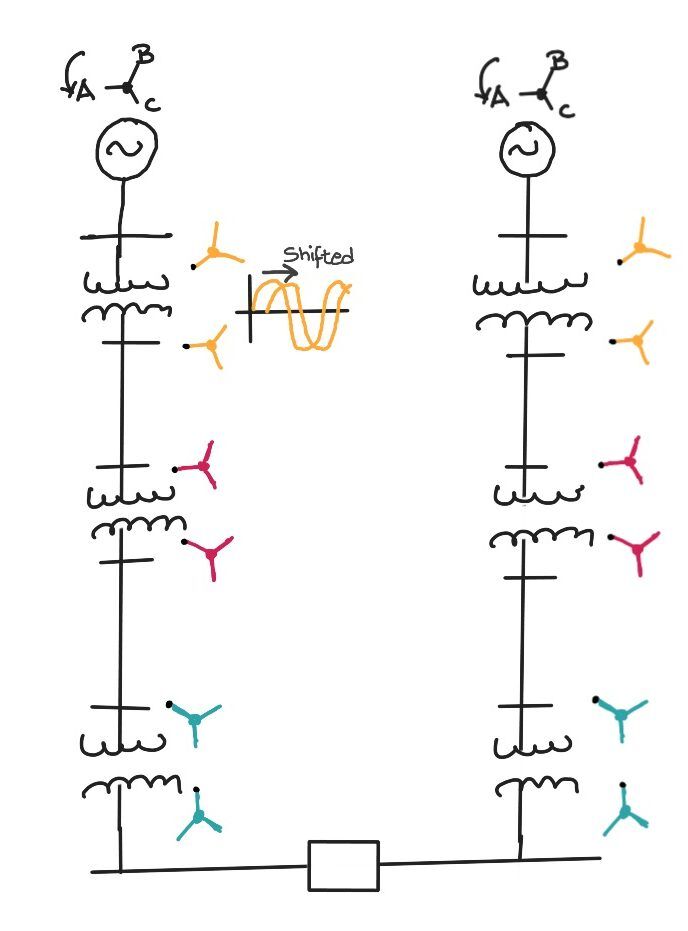

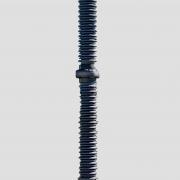

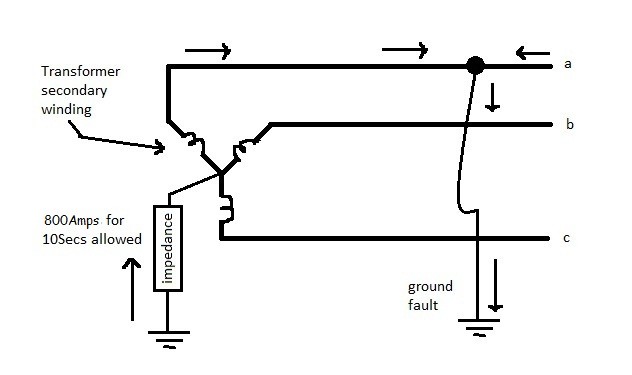

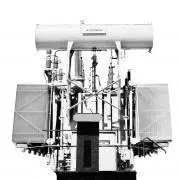
I have ran in to the situation of phase sequence rotating in opposite directions on the primary TX windings when trying to parallel to substations, the result when using an analog high voltage phasing set on the TX secondary side was an out of phase, out of phase and a way out of phase if that makes sense, so there was no way to determine what needed to flipped to match phasing. We flopped the high side and then were able to tell what phases needed to go where to parallel TXs.
As stated above regarding diagram above figure 3, B phase is reaching its peak negative and positive at the same time from the two different phase sequences, so B being out of phase makes total sense. On the other hand A phase is peaking at the same time from either phase sequence, now I know from experience that there would be a no phase situation but that doesn’t logically make sense given that they are in phase according to their sine waves. Would you please make sense of this for me?